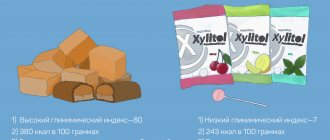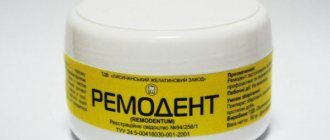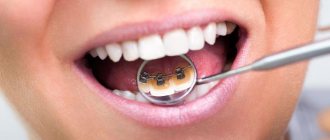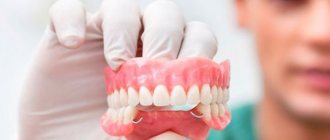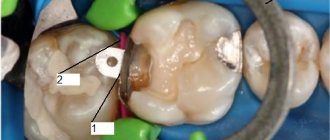What role does a proper diet play in preventing tooth decay?
A healthy, balanced diet is an important factor in the maturation and mineralization of tooth enamel, the prevention of caries and periodontal diseases.
In this article
- What role does a proper diet play in preventing tooth decay?
- How to eat properly to avoid caries?
- What foods can be dangerous for teeth?
- Drinks that increase the risk of tooth decay
- What to eat to prevent caries?
- Other caries prevention measures
The foods we eat affect:
- on the number of bacteria in the oral cavity (the more food rich in quickly digestible carbohydrates and sugars, the more microbes);
- on the amount and composition of saliva, which cleans teeth and naturally neutralizes the effect of bacteria;
- for self-cleaning of teeth and oral cavity (solid food cleanses teeth of food debris and soft plaque);
- on the level of acidity (its increase promotes the active proliferation of bacteria);
- on the general condition of the body and teeth in particular.
Thus, in order to prevent caries, it is necessary not only to maintain oral hygiene and regularly visit the dentist, but also to correct the diet and general nutrition system.
How to prevent dental caries
There are systemic methods for the prevention of caries, affecting the entire body, and local ones, with a localized effect on the oral cavity. Both the first and second can be medicinal or non-medicinal. Thus, methods for preventing caries can be divided into 4 large groups:
Local non-drug prophylaxis
- Individual oral hygiene. First of all, we are talking about brushing your teeth with preventative toothpaste, for example, Colgate® Maximum Protection Against Caries + Sugar Acid Neutralizer. Its formula includes not only fluoride and calcium, but also substances that fight cariogenic acids in dental plaque. In addition, comprehensive hygiene involves using mouthwash after every meal. Colgate® Plax Fruit Fresh contains fluoride to protect against tooth decay and kill up to 99.9% of harmful bacteria. Finally, you should clean the spaces between your teeth with dental floss. Instead of regular floss, use Colgate® Total Fluoride Mint Dental Tape, which has one side coated with sodium fluoride.
- Professional oral hygiene. Even if you brush your teeth thoroughly, some of the deposits in areas of the dentition that are difficult to reach with a toothbrush turn into hard plaque. This occurs due to the accumulation of dental plaque in areas such as proximal surfaces, cervical areas, and chewing surfaces of molars. To get rid of tartar in these areas, you should regularly consult a doctor and remove it using dental equipment. There are several professional cleaning technologies: laser, ultrasonic, compressed air. All of them demonstrate high efficiency [1].
Local drug prophylaxis
- Remineralizing therapy with calcium preparations. For this purpose, rinses, applications, and oral baths can be used. The most effective drug electrophoresis, in which the effect of the drug is enhanced by direct electric current. The method allows you to introduce charged particles into the deep tissues of teeth - dentin and pulp [1].
- Prevention with fluoride preparations. The most commonly used coating is fluoride varnish, the film of which is retained on the tooth surface for a long time and saturates the enamel with fluoride ions. Depending on the specific preparation and the intensity of the carious process, the varnish application procedure is repeated from 2 to 12 times a year [1, 2].
- Fissure sealing. Fissures are natural depressions on the chewing surface of teeth. Due to the difficulty of removing plaque from them and insufficient mineralization, they turn out to be a risk area for caries. To avoid this, the fissures are hermetically sealed with filling materials. Before this, the enamel is etched to improve contact with the sealant and destroy microorganisms. Depending on the technique and retention of the material on the surface, the sealing efficiency is 55–99% [1, 2].
Systemic non-drug prophylaxis
- Proper nutrition. To prevent tooth decay, you should eat as little sweets as possible. At the same time, the main danger is represented by foods that linger in the mouth for a long time, for example, sucking candies. You should not eat foods with a lot of sugar at night and as the last part of the meal. On the contrary, vegetables, fruits, and greens are good for dental health. Sources of calcium are primarily milk and dairy products, as well as beans, nuts, and oatmeal. In order for calcium to be well absorbed, the food must contain phosphorus, which is rich in meat and cereals [1, 3].
Systemic drug prophylaxis
- Fluoridation of drinking water and food. Water with the addition of soluble fluoride salts is supplied through the central water supply system, and, if not possible, given to children in schools. Currently, 5% of the world's population drinks such water. This gives a tangible effect. The increase in caries is reduced by 40–50% for temporary teeth and by 50–60% for permanent teeth. The economic benefits are also great: the cost of fluoridation is 25–50 times less than that of treatment. Milk and table salt are fluoridated from food products in different countries, which also shows excellent results [2].
- Taking medications and vitamin complexes that have a beneficial effect on tooth tissue [1]. First of all, this is sodium fluoride - alone or in combination with vitamins A, C, D. Phosphorus preparations and potassium orotate are also prescribed, which helps fix calcium in tissues.
Preventing caries is easier than treating it: even if the disease is detected at an early stage of the “chalk spot”, there is a chance to stop the destruction process and restore damaged enamel with the help of remineralizing therapy. Therefore, it is so important to use non-drug prevention methods for each person and medicinal ones as prescribed by a dentist, who must undergo examinations at least every six months.
List of sources:
- Boltromyuk G.I. Prevention of dental caries. Toolkit. Irkutsk: IrGUPS MK ZhT, 2016. // URL: https://www.irgups.ru/sites/default/files/mkzht/mp_profilaktika_kariesa.pdf (access date: 10/02/2020).
- Borodovitsina S.I. Prevention of dental diseases: textbook. Ryazan: Federal State Budgetary Educational Institution of Higher Education Ryaz State Medical University of the Ministry of Health of Russia, 2022. // URL: https://rzgmu.ru/images/files/4/9761.pdf (access date: 10/02/2020).
- “A few questions about caries”, interview with Leontyev V.K., MD. // URL: https://dentalcommunity.ru/articles/2291/ (date of access: 03.11.2020).
How to eat properly to avoid caries?
To reduce the risk of dental caries, you need to adjust your diet in accordance with the following recommendations:
- Limit foods that cause caries in your diet, in particular, minimize the consumption of fast carbohydrates and sugars.
- Rinse your mouth or brush your teeth after every meal. For rinsing, you can use water or special solutions.
- You should not eat sweets between main meals, so that sugar does not remain on your teeth - a breeding ground for microbes.
- Add more solid and fibrous foods (fresh vegetables, fruits) to your diet, which will cleanse the enamel of soft plaque and remove food debris.
- Eat food at a comfortable temperature (neither hot nor cold).
- There are foods high in fluoride, calcium, phosphorus, and vitamin D that are good for teeth.
- Chew food well and for a long time, because chewing produces saliva, which has a bactericidal effect and destroys the cell walls of bacteria.
Expert advice and recommendations
- To more effectively remove sticky and sugary food residues, use fluoride rinses.
- It is worth limiting the consumption of foods high in sugar. Candies and donuts can be replaced with fruit.
- To prevent caries, it is important that teeth brushing occurs immediately after eating.
- It is extremely undesirable to eat foods that contrast in temperature, as this negatively affects the condition of the enamel and contributes to the occurrence of microcracks.
What foods can be dangerous for teeth?
- Food that is too hot or too cold weakens tooth enamel and causes microcracks to appear on it, into which cariogenic microbes easily penetrate.
- Sweet foods are an ideal breeding ground for bacteria. Microbes convert the sugars contained in sweets into acids that destroy enamel and dentin, causing caries. In addition, some sweets (for example, caramel, toffee, candy bars) stick to the teeth, get stuck in hard-to-reach places and remain in the mouth for a long time, exacerbating the proliferation of microbes.
- Acidic foods. Although citrus fruits are very beneficial for our immunity, in large quantities they can be dangerous for tooth enamel due to the acid they contain. Also, due to the high acid content, store-bought sauces, ketchups, and pickled foods can be dangerous for teeth. To prevent dental caries, it is recommended to rinse your mouth with clean water immediately after eating acidic foods.
- Fruits and berries in large quantities, as modern research shows, can also increase the risk of developing caries. It turns out that modern fruits contain much more sugar than just a few decades ago. Therefore, it is recommended to eat them in moderation.
- Unpeeled seeds and nuts wear away tooth enamel and contribute to the appearance of chips on the surface of teeth, which increases the risk of developing caries.
- Alcohol, chips, and crackers contribute to a prolonged feeling of dry mouth and reduce salivation. But saliva naturally cleanses teeth of food debris and has an antimicrobial effect.
Drinks that increase the risk of tooth decay
- Sodas like Coca-Cola stain the surface of tooth enamel and destroy bone tissue in the body.
- Tea helps wash out calcium and stains teeth, while coffee also promotes the growth of bacteria in the oral cavity.
- Energy drinks destroy tooth enamel due to large amounts of acids.
- Store-bought fruit juices contain large amounts of sugar.
You don’t have to completely give up all drinks, but you need to follow safety precautions when drinking them. For example, drink juices or tea through a straw to minimize contact with teeth.
What to eat to prevent caries?
Not only limited consumption of foods that are harmful to dental health helps reduce the risk of developing caries, but also, on the contrary, the introduction of foods that are rich in beneficial microelements into the diet. Fluoride, calcium and phosphorus play a vital role in caries prevention.
Fluoride strengthens tooth enamel, prevents the proliferation of pathogenic microflora, and in childhood plays a decisive role in the proper formation of teeth. Food sources of fluoride are black and green tea, mineral water, garlic, fish, walnuts, parsley, and seafood.
Calcium is the main building material of teeth; it strengthens and restores tooth enamel, protects it from the destructive effects of acid produced by bacteria. If you want to have healthy teeth without caries, your diet should include dairy products, eggs, herbs, nuts, and green vegetables. Vitamin D is necessary for the absorption of calcium. Therefore, along with calcium-containing foods, the diet should include foods containing this vitamin: fish oil, egg yolk, cod liver, tuna, butter.
Phosphorus promotes normal tooth growth and maintains healthy enamel. Buckwheat, fish, oatmeal, beans, and red meat are rich in phosphorus.
Diet against caries
A complete diet includes 5 main components: proteins, fats, carbohydrates, vitamins and minerals. The most important for dental health are calcium, fluoride and vitamin D.
Fluorine
The optimal dosage of fluoride per day is 2-3 mg, while a large amount of the mineral enters the body with drinking water. Many cities specifically carry out fluoridation of water. Fluorine, together with calcium and phosphorus, takes an active part in the formation of bone tissue and tooth enamel.
However, it should be remembered that an increased fluoride content is fraught with the development of fluorosis. This is a chronic disease that causes a “mottled enamel” effect.
Calcium
Calcium is the main building material for teeth and bones. The daily calcium requirement for an adult is 800-900 mg. However, this element is absorbed only with a sufficient amount of vitamin D.
Vitamin D
Vitamin D is produced by the body when exposed to sunlight. But residents of northern regions, where there are few sunny days, are recommended to take dietary supplements with vitamin D; its daily requirement for an adult is 5 mcg.
Other caries prevention measures
A healthy and balanced diet is of great importance in preventing the development of dental caries. However, you should not expect that giving up some foods and eating others can completely get rid of dental caries. An integrated approach is important in the fight against cariogenic bacteria and the prevention of caries. After adjusting your diet, also pay attention to the following points:
- Brush your teeth regularly with a properly selected brush and paste, use floss, dental floss or irrigators to remove food debris from hard-to-reach areas and interdental spaces.
- Visit your dentist twice a year for preventative purposes, even if you have no symptoms of caries and no signs of oral discomfort.
- When caries appears, treat it at an early stage, without delaying the process to a deep stage or pulpitis.
- Regularly visit a hygienist for professional teeth cleaning - special equipment will help remove complex plaque from the surface of the teeth, which is difficult to remove with manual brushing.
Compliance with these simple preventive measures plus nutritional correction towards a healthy and balanced diet will allow you to maintain healthy teeth for a long time and prevent the development of caries.
Traditional and promising approaches to caries prevention
Dental caries is a pathological process in the hard tissues of the tooth, resulting from a complex interaction of unfavorable factors and characterized in the initial stage of development by focal demineralization of the inorganic part of the enamel, the destruction of its organic matrix, ending with the destruction of the hard tissues of the tooth with the formation of a cavity or defect in the enamel, dentin, and in the absence of treatment - the occurrence of inflammatory complications from the pulp and periodontium. Despite significant advances in the treatment of caries, it remains not only the top priority in modern dental research, but also the most common disease. According to numerous publications, over 93% of the world's population suffers from it. In childhood, caries ranks first among chronic diseases - from 80% to 90% of children with milk teeth, about 80% of adolescents have carious cavities. 95% of adults have teeth filled [1].
Frequent consumption of carbohydrates in food and irregular or improper oral care create a favorable situation for the accumulation of plaque on the teeth. Food remains get stuck in fissures, tooth sockets, between teeth; collected on dentures and braces. Food begins to rot and ferment; microorganisms develop in it at a tremendous speed - Streptococcus mutans, Streptococcus sanguis, Streptococcus salivarius, which lead to the formation of organic acids. Soft plaque, not removed in a timely manner from the surface of the tooth, mineralizes and becomes hard, forming the so-called tartar.
Development of caries
- Bacteria contained in dental plaque process carbohydrates consumed with food. This process is accompanied by the release of sugar acids.
- Exposure to sugar acids leads to loss of calcium from the enamel and the appearance of areas of weakened enamel. This is the initial stage of caries development; At this stage, it can be prevented if you take proper care of your oral cavity and promptly consult a dentist.
- If measures are not taken in time, caries will progress. A carious cavity forms; At this stage, only a dentist can cure the tooth.
- Without treatment, caries progresses, reaching the dental canals.
- In the future, the condition of the tooth will worsen; causing inflammation.
It is the frequent consumption of easily digestible carbohydrates that is one of the main factors leading to the occurrence of caries. Unfortunately, such eating disorders are widespread, and it is hardly possible to completely eliminate sugar from our diet. One way or another, an important area of prevention is limiting carbohydrates in children’s diets and replacing sugar with non-cariogenic products (sorbitol, xylitol) in food mixtures and confectionery products. Milk and dairy products help remineralize enamel. The use of chewing gum, especially with xylitol, plays a positive role: chewing gum removes food debris from dental fissures; secondly, the chewing process itself leads to the release of large amounts of saliva [2].
A natural factor that reduces the pathogenic effects of sugar acids on teeth is saliva, which neutralizes and washes away acids, while protecting the hard tissues of the tooth from dissolution and even promoting their remineralization. Unfortunately, if plaque has already formed on the teeth, the protective effect of saliva is limited.
The highly pronounced anti-caries effect of dental fluoridation is widely known. It is explained by the replacement of the hydroxyl group of hydroxyapatite in tooth enamel with fluoride. Moreover, a number of researchers provide evidence that fluoride inhibits the proliferation of bacteria that cause the formation of sugar acids.
Fluorides, present in low concentrations in the oral cavity, suppress demineralization processes and enhance remineralization of hard dental tissues, preventing the formation of carious cavities.
It has been established that the most pronounced effect is observed when fluoride enters the body in childhood, during the period of formation, mineralization and final maturation of teeth. Water fluoridation is considered to be the most radical and effective method: at a concentration of 1 mg/l this leads to a reduction in caries by 30–50% [3] (however, it should be borne in mind that an excessive amount of fluoride, more than 1 mg/l, especially in childhood , can lead to fluorosis, which manifests itself in the formation of spots and defects of various sizes, shapes and colors on the surface of the enamel). Based on these data, the World Health Organization (WHO) recommended widespread water fluoridation [4].
Along with water fluoridation, local applications of fluorine compounds are also used: 1–2% sodium fluoride or tin fluoride, or the application of fluoride-containing varnishes.
Taking into account these factors, the leading direction of prevention is currently considered to be the local use of fluoride; The most common and accessible means of such prevention is toothpastes containing fluoride. The use of toothpaste with fluoride in accordance with the official recommendation of the Russian Dental Association is considered the most effective available and clinically proven method of preventing the development of caries.
However, fluoridation, restoring demineralized tissues, increasing the resistance of hard dental tissues to the action of organic acids, does not interfere with the onset of caries development, does not prevent the occurrence of dental plaque and does not suppress the secretion of acids by cariogenic bacteria.
Recently, work has been carried out on such promising methods of caries prevention as the use of helium-neon lasers. Studies have shown that low-intensity monochromatic red light of a helium-neon laser increases the density and durability of enamel, has an antibacterial effect, activating the body's defense mechanisms [5].
Work is also underway to create vaccines against Streptococcus mutans, which is the main culprit of the caries process [6].
Therefore, despite the availability of effective means of preventing dental caries, the search for new methods still remains an urgent task of modern dental research.
One of the promising areas of prevention is based on the etiopathogenetic approach. Cariogenic bacteria that produce sugar acids multiply in an acidic environment. The dental film contains thousands of varieties of microorganisms that support mutual metabolic processes. With frequent consumption of sugars in the biofilm, the production of acids is intensified, the number of cariogenic strains of bacteria increases sharply, and the concentration of non-cariogenic bacteria, on the contrary, decreases [7]. A change in the acidity level at the point of contact between the biofilm and the tooth triggers the process of demineralization of the enamel. Removal of plaque, exposure to saliva, fluoride, and other preventive agents stops this process, but further intake of light carbohydrates and restoration of the biofilm lead to repeated cycles of demineralization.
Realizing the unreality of changing dietary habits and dental hygiene, a number of researchers have devoted themselves to finding ways to change the pathogenetic cycle of caries development. It turned out that by acting on the dental biofilm, it is possible to interrupt this cycle at the stage of production of sugar acids. The fact is that the biofilm microflora includes not only acid-forming but alkali-forming bacteria. Nitrogen compounds serve as a substrate for the production of alkalis. Arginine has attracted the attention of researchers.
Arginine is a natural amino acid that is normally present in saliva and in many foods; it is used as a food additive, including in baby food. Arginine is recognized as a safe ingredient for use in foods by the US Food and Drug Administration (FDA). It is metabolized by argininolytic bacteria, as a result of which the acidity of dental plaque increases, the intraoral environment becomes alkaline and becomes safe for the mineral components of hard dental tissues.
The possibility of this method of influencing the cariogenicity of dental plaque has found practical application in the prevention of caries. An effective solution turned out to be innovative technology, which consists in using a new generation of Colgate toothpaste as an oral hygiene product. Maximum protection against caries + Sugar Acid Neutralizer, containing 1.5% arginine, insoluble calcium compounds and 1450 ppm. fluoride (fluoride ion in the form of sodium monofluorophosphate).
The inclusion of an insoluble calcium compound in toothpaste enhances the preventive effect of fluoride. Calcium, entering the biofilm with each brushing of the teeth, oversaturates it with calcium ions, which prevents the release of calcium from the enamel, dentin and cementum of teeth during acid attacks.
Theoretical and experimental studies of the effectiveness of the use of arginine and insoluble calcium in the prevention of caries have been confirmed by clinical studies.
Thus, a parallel group clinical study conducted in the USA showed that in the group of patients using the new toothpaste, the acidity of plaque was significantly higher than in the group of patients using toothpaste with 1100 ppm fluoride. A toothpaste containing 1.5% arginine, an insoluble calcium compound and 1450 ppm fluoride reduces early caries lesions by half after six months of use [8].
Thus, the use of new technologies for the prevention of dental caries at home, containing not only fluorides, but also arginine, can neutralize cariogenic acids directly in the plaque biofilm and improve oral hygiene. A sugar acid neutralizer will complement the action of fluoride by inhibiting demineralization and increasing remineralization, providing additional benefits in the prevention of dental caries. Based on the presented results of clinical studies, the new Colgate toothpaste Maximum protection against caries + Sugar Acid Neutralizer can be recommended for widespread use as an effective means of caries prevention.
Literature
- Paramedic's Handbook / Ed. Corresponding member USSR Academy of Medical Sciences A. N. Shabanova. M.: Medicine, 1976.
- Xylitol chewing gum to be effective in reducing mutans streptococci. National Center of Biotechnology Information, https://www.ncbi.nlm.nih.gov/pmc/articles/PMC1482697/? tool=pubmed (English).
- Oral Health facts sheets. Centers for Disease Control and Prevention. https://www.cdc.gov/OralHealth/factsheets/dental_caries.htm (English).
- Water sanitation health. Dental caries: a worldwide epidemic. World Health Organization. https://www.who.int/water_sanitation_health/oralhealth/en/index1.html/ (English).
- Kuryakina N.V. Therapeutic dentistry of children. M., 2001.
- Caries Vaccine. National Institute of Dental and Craniofacial Research. https://www.nidcr.nih.gov/Research/ResearchPriorities/ExpertPanelsOnScientificOpportunities/PanelOnCariesVacine.htm (English).
- Laurence J. Walsh Dental plaque fermentation and its role in caries risk assessment international dentistry SA. Vol. 8. No. 5 (English).
- New study supports the efficacy of desensitising toothpaste. Dental Tribune, https://www.dental-tribune.com/articles/news/asiapacific/14790_new_study_supports_efficacy_of_desensitising_toothpaste.html (English).
- Wolff M., Corby P., Klaczany G., Santarpia III RP, Lavender S., Gittins E., Vandeven M., Cummins D., Sullivan R. In vivo effects of a new dentifrice containing 1.5% arginine and 1450 ppm fluoride on plaque metabolism // J Clin Dent. 2013. Vol. 24 (English).
G. I. Khomutova
Dental clinic DAF-MED, Reutov
Contact Information

